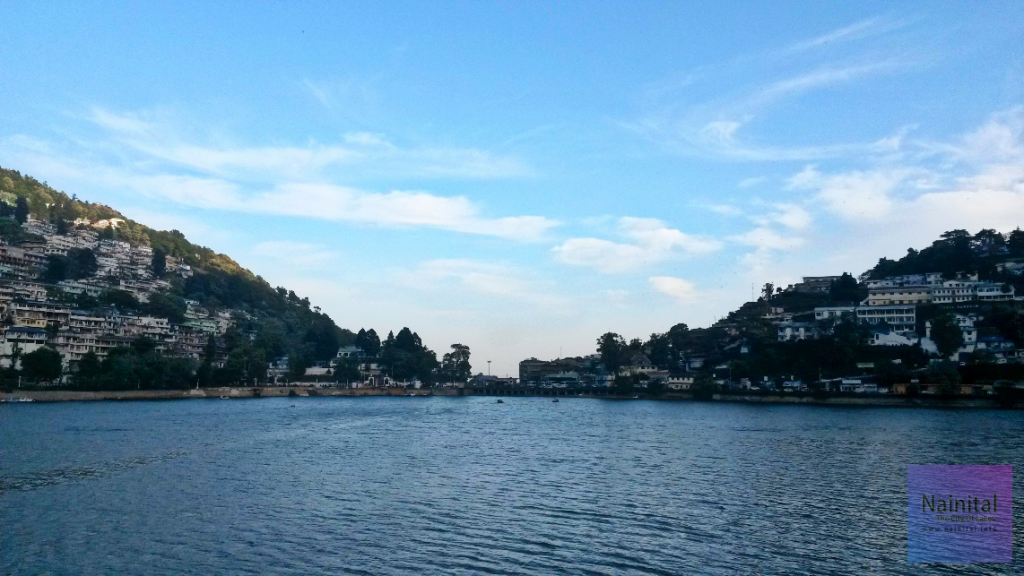Lake Restoration
ArticleBhimtal, Kumaon, Lake, Lake Development Authority, Lake Restoration, Nainilake, Nainital, Nainital-Jheel, Naukuchiyatal, NIH, Sattal, soil, Sukhatal, UttarakhandWith 4 commentsT The National Institute of Hydrology (NIH) of Roorkee who prepared a plan for the restoration of the lake, at an estimated cost of Rs 50 crore (about US $ 10 million), sponsored by the Ministry of Environment and Forests, Government of India, are also now guiding the restoration measures. The Conservation and Management Plan evolved by NIH is not only lake centric but also proposes to tackle the immediate periphery of the lake which contributes an adverse impact on the lake.
The “Nainital Jheel Parikshetra Vishesh Kshetra Vikas Pradhikaran”, the Lake Development Authority notified under U.P. Special Area Development Act 1986 is a Special Purpose Vehicle (SPV) set up for implementing the restoration works. The restoration works that have been implemented or are in different stages of implementation are the following:
- Limnological measures such as bottom aeration, siphoning of hypolimnetic water, biomanipulation and limited sediment removal from the deltas of drains which lead to the lake.
- Soil Conservation & Slope Stabilization measures in the form of soil conservation and watershed management activities in the catchment area of the lake, slope stabilization, Drainage line treatment, landslide scars to be treated with Coir geotextiles with gabion cross-barriers and proper maintenance and cleaning of drainage system
- Provide 100% coverage of the town surrounding the lake with sewers and Sewage Treatment Plants (STPs)
- Improved sanitation around the lake and in the catchment with new community toilets to cover all sections of the society, improved design of household toilets
- Better solid waste management by disposing of the solid waste through a chute to the downhill outside the catchment, developing landfill sites is developed and in isolated habitations in the upper reaches of hills, introduce composting measures with support from NGOs.
- Limited dredging of the lake, particularly near the deltas of drains that bring sediments
- Fish Gambusia affinis introduced a few years ago to control mosquito larvae, the fish have started feeding on the larger zooplankton resulting due to scanty larvae population resulting in adverse impact on the lake water quality. This needs to be controlled by putting minnow traps in the lake and introducing some other fish species
- The outflow from the lake is into the Balia Nala drain controlled by a set of sluices located at the lake bridge. The sluices which are old need renovation and replacement. The Balia Nala also needs slope stabilization measures to check landslides
- Shoreline Development and improvement of facilities at all important monuments and temples located in the periphery of the lake and providing avenue paths and roads
- Improved Public Awareness and Public Participation programmes
- The “Nainital Jheel Parikshetra Vishesh Kshetra Vikas Pradhikaran” could function better in a limited role as a promoter and a facilitator for developmental and commercial activities with jurisdiction extended to cover all four lakes in the district, as at present a plethora of organizations are functioning in the notified area such as Nainital Nagar Palika Parishad, Jal Nigam, Irrigation Department, Power Corporation, Forest Department and Fisheries Department who are directly involved with the lake.
The Honourable Supreme Court of India in its judgment of 1995, in response to the Public Interest Litigation, gave the following recommendations which have also been addressed in the restoration measures mentioned above.
(i)Sewage water has to be prevented at any cost from entering the lake; (ii) So far as the drains which ultimately fall in the lake are concerned, it has to be seen that building materials are not allowed to be heaped on the drains to prevent siltation of the lake;(iii) Care has been taken to see that horse dung does not reach the lake. If for this purpose the horse stand has to be shifted somewhere, the same would be done. The authorities would examine whether trotting of horses around the lake is also required to be prevented;(iv) Multi-storeyed group housing and commercial complexes have to be banned in the town area of Naini Tal. Building of small residential houses on flat areas could, however, be permitted;(v) The offence of illegal felling of trees is required to be made cognizable.(vi) Vehicular traffic on the Mall has to be reduced. Heavy vehicles may not be permitted to ply on Mall;(vii) The fragile nature of Ballia Ravine has to be taken care of. The cracks in the revetment of Ballia Nullah have to be repaired urgently.
In the “India Today” magazine, Prasanta Rajan, a journalist, in a preamble to the particular interest shown by the Lady District Magistrate of Nainital in restoration works of the lake has very vividly described the lake in these words:
Look for the lake through the colonial windows of Pant House, a vintage English bungalow on the hilltop, now submerged in wintry night, solitary with a kind of Wuthering Heights mystery. Down below, the lake is a laminated stillness, protected by seven never-sleeping hills. In the dead darkness of Kumaon, this magnificence is a distant, partially lit vision, less than real, as the hills of frozen memories make the lake a footnote in water.
Source : http://en.wikipedia.org/wiki/Nainital_Lake


Hi Ashok Sir, Thank you for reading this article/blog & giving your valuable inputs.
Can any one explain the current situation of lake
Hi Yogesh, Aeration project is doing fine but water level is low this time due to no rainfall and snow this season.
How much money is spend in cleaning of Sattal and Khurpatal lake using Aeration process?